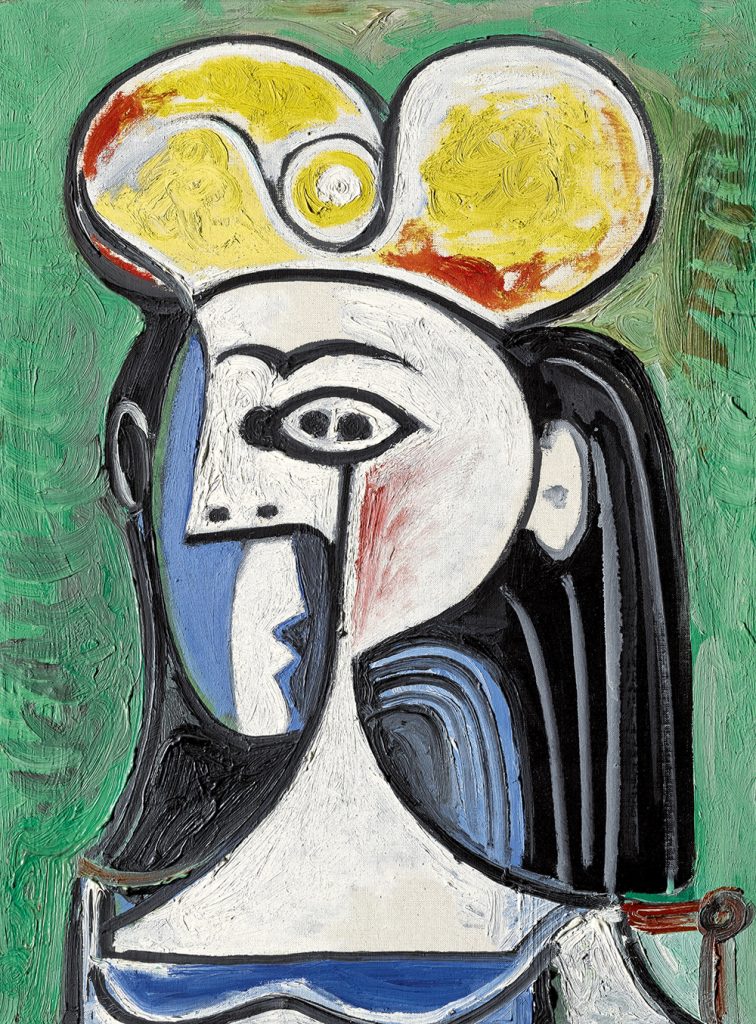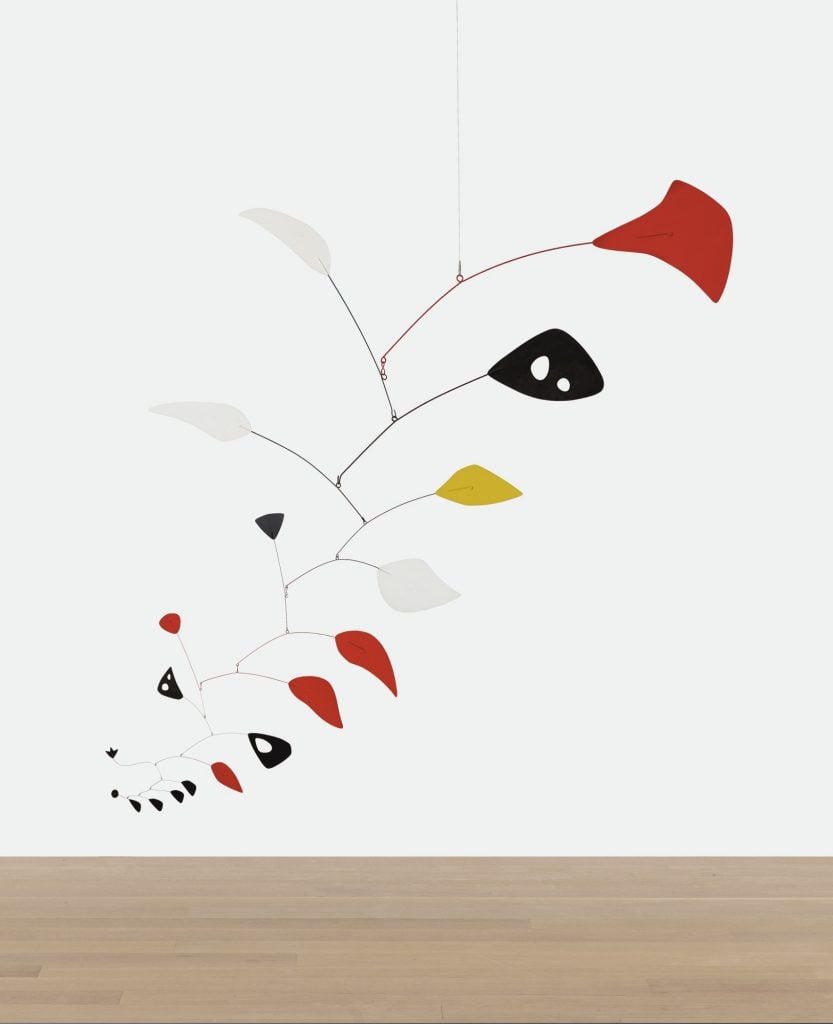Sotheby’s capped off this most unusual 2020 with one final marquee livestreamed evening auction. Its inaugural Impressionist, Modern and contemporary sale brought in $52.9 million before fees, well ahead of the low estimate of $40.1 million, though short of the $58.6 million high estimate. With fees, the total came to $63.4 million, and the sell-through rate was a solid 92 percent.
The casual observer could be forgiven for thinking that we’ve already had these sales before. Just weeks ago, Sotheby’s made quite a hullabaloo about its back-to-back fall evening sales of Impressionist and Modern art, followed by postwar and contemporary art. Sotheby’s claimed more than a million people tuned in to watch, and there is a good chance you, reader, were one of that million.
But no, this sale was something different entirely: one sale mixing the old and the new, instead of two separate sales. If you’re confused, let’s just call it a hybrid experiment in a year when all expectations for how to do things were scrapped. And that’s how we get a sale that, per Sotheby’s literature, created a “tableau that tells the story of artistic progression over the last 150 years.”
While this tableau was an unprecedented sale without an apples-to-apples comparison, the proceedings—which saw auctioneer Oliver Barker in London facing the video feeds of Sotheby’s specialists—were buoyant enough to let house owner Patrick Drahi and his brass go into the holidays somewhat optimistic.
The top lot on the evening was the Alexander Calder mobile Mariposa (1951) from the collection of Neiman Marcus founder Stanley Marcus, offered up now because the retailer is selling off its corporate collection after filing for Chapter 11 bankruptcy. The work smashed a high estimate of $8 million, ultimately hammering at $16.6 million to a client on the phone with senior specialist Simon Stock after a bidding war with a half-dozen specialists. With fees, the total was $18.2 million.

Pablo Picasso Buste de femme assise (1962). (Photo courtesy Sotheby’s.)
The only other lot to hit eight figures was Pablo Picasso’s Buste de femme assise (1962), which sold to Sotheby’s Europe chairman Helena Newman’s client for $9.5 million, or $11.2 million with fees.
Another prominent consignor was the Brooklyn Museum, which is continuing its deaccessioning spree with the pastel-hued Monet painting Vernon, soleil (1894). It sold for $3.9 million—just below the low $4 million estimate—to a client on the phone with senior vice president Julian Dawes. With fees, the total was a mid-estimate $4.7 million.
The proceedings began with serious fireworks when four bidders pushed the price for Barkley L. Hendricks’s Mr. Johnson (Sammy From Miami) (1972) higher and higher until it sold to the person on the phone with vice president Bame Fierro March for an above-estimate hammer price of $3.3 million. With fees, the price was $4 million, enough for a new auction record for Hendricks, whose market has blown up considerably since his death in 2017. (It’s been reported that paintings by Hendricks are changing hands privately for as much as $14 million.)

Barkley L. Hendricks Mr. Johnson (Sammy From Miami) (1972). Photo courtesy Sotheby’s.
Matthew Wong, a newly minted market star who died at 35 in 2019, also continued to command sky-high prices. Tonight, Pink Wave (2017) sold for a hammer price of $1.9 million, or $2.35 million with fees, well ahead of the $400,000 high estimate—the third-highest mark for an artist whose prices have not yet seen their ceiling. The lot prompted perhaps the most protracted tug-of-war of the night, with New York evening sale head David Galperin and Imp-Mod senior vice president Scott Niichel jousting back and forth for over ten minutes until Niichel prevailed.
The gimmick of slotting current market darlings into a sale of mostly Imp-Mod stalwarts isn’t especially shocking in a world where Da Vincis and dinos are sold alongside the new guys. But the living artists fared well enough. Glenn Ligon’s Stranger #37 (2008) sold for a hammer price of $2.8 million to Fine Arts Division chairman Amy Cappellazzo. With fees, the price was $3.4 million.
Mark Bradford’s Drag Her to The Grave (2011) sold to Ei-Linn Liew, a loan portfolio manager for Sotheby’s Financial Services, for a $3 million hammer, or $3.65 million with fees. (The consignor bought it for $2.96 million at Phillips in 2017, netting them a paltry $40,000 return on investment.)

Matthew Wong, Pink Wave (2017). Photo courtesy Sotheby’s.
Rounding out the living artists in the sale, Jenny Saville’s drawing Reproduction Drawing III (After the Leonardo Cartoon) (2009–10) sold to Grégoire Billault, though the hammer price of $530,000 was well under the $700,000 low estimate.
Not all was rosy. The 92 percent sell-through rate was rather misleading, seeing as nearly 20 percent of the entire sale had been withdrawn prior to the sale, indicating that the consignors expected a good chunk of the auction to not sell. Five of the 30 lots were pulled, including a Milton Avery expected to fetch between $3 million and $5 million and an Edvard Munch expected to sell for between $3 million and $4 million. Overall, the withdrawn lots lopped off $15.2 million from the night’s high estimate.
What’s more, of the 25 remaining lots, 15 of them were either saddled with a guarantee or an irrevocable bid, ensuring they would sell.
It’s unclear whether one million people were watching this sale (or whether anyone was watching Studio 360 host Kurt Andersen’s folksy stroll through the Sotheby’s storage units that preceded it), but whoever turned in got treated to a real blockbuster of an auction broadcast, with a stirring opening soundtrack suitable for Monday Night Football and fancy camerawork that ratcheted up the action like a Michael Bay movie.
Bonus points to the team in London who were up way past their bedtimes, clocking in for a 10:00 p.m opening hammer smack and a run of lots that stretched toward midnight. But fatigue never showed, and in fact, all the teams looked rather natty, especially because they were all wearing chic royal blue face masks emblazoned with the Sotheby’s logo in gold. Maybe the house should sell those, too.












